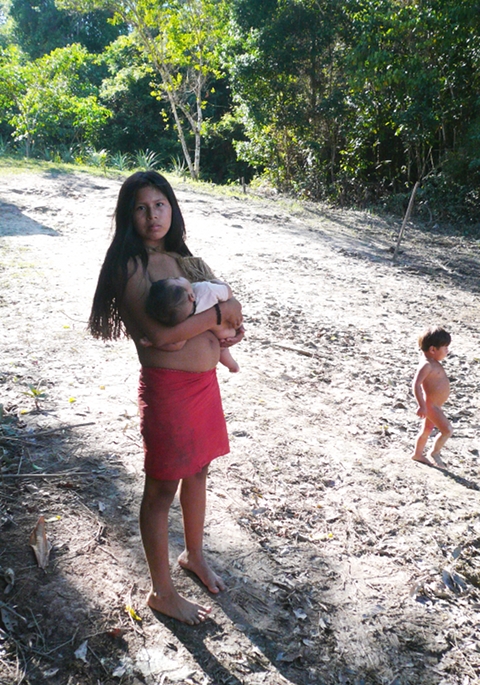Deforestation/Introduction
| Module One Objectives
|
Contents
Introductory Activity
| Wonderings
Reflect on (think about) the photo below, and discuss in a group what you see in the picture. Can you answer all the "I wonder ..." questions below?
|
What is Deforestation?
In ancient times, much of the earth’s surface was covered by forests. Today, forests occupy a much smaller, but still very large percentage of the earth’s surface. These forests are important, not only for cleaning the air that we breathe, but also for providing a home and livelihood for many different people and animals. The process of clearing large areas of indigenous (naturally occurring) forests for other uses, is known as deforestation. This term does not include the removal of plantations of gums or pines planted by farmers for industrial and commercial use - for example, for paper and furniture. Unfortunately, this percentage has been getting smaller as forests and woodlands have been destroyed - indigenous forests now cover only 21% of the earth’s surface, which is very little.
Indigenous forests are cleared by logging or burning trees. There are a number of reasons why deforestation occurs: for agriculture (farming); settlement and urban expansion; for creating wastelands that would store the fast-growing urban wastes; and for financial gain as trees can be sold and/or used as charcoal.
How Has Deforestation Become a Problem?
Factories and other businesses require land in order to run. Factories can be very large and take up a lot of land. In the middle of the 20th century many more factories were being built all over the world. As nobody really owned the forests at that time (and there were no laws to protect them), businesses took the opportunity to destroy the forests so that they could claim the land for themselves and build their factories. The building of these factories provided jobs for many people, therefore very few people were concerned about how quickly deforestation was occurring.
In addition to poor forest management, agriculture also contributed to deforestation. People destroyed the forests so that they could use the land as pasture, for planting crops, e.g. rice, corn and bananas. In many countries today, deforestation is an ongoing issue that is causing the extinction of animals and plants as well as the loss of homes of indigenous people who used to live there.
The causes and effects of deforestation will be covered in more detail in later modules.
Example of a Glossary Table
| New word | Definition |
|---|---|
| Forest | Dense trees, plants and undergrowth covering a large area. |
| Rainforest | A forest with a high annual (yearly) rainfall. |
| Atmosphere | The layer of gases that surround a planet. |
| Biodiversity | Variety of lifeforms in the living world. |
| Activity Two: Define Deforestation
From the group discussions and the information provided above, write a definition of deforestation in your own words. Make sure that your definition clearly explains:
If you come across any words you do not understand, look them up in a dictionary and add the words and their meanings to your glossary table. Can you use any of these words in your definition?
|
What is a Hypothesis?
A hypothesis is a best guess at an answer using everything you know about a topic.
For example: if you plant seeds and water them regularly, your best guess (hypothesis) is that they will grow.
| Activity Three: Hypothesis
Imagine that you are a child living in a community close to a rainforest. A lot of people are moving away from your village because there are no jobs. A global corporation is proposing to create jobs and housing by cutting away a large section of the forest beside your home. Write a hypothesis (best guess) to answer this question:
|
Ongoing Assessment
The activity below will be used by the teacher to find out how much you have learned in this entire unit on deforestation.
| Assessment One: KWL Table (Know, Want, Learned)
Create a table like the one below. Use this table to record your learning throughout the unit (all modules). As you work through the modules and learn more, keep adding to your table:
Consider: What information do you need to know to decide whether deforestation is good or bad for a community? What are the benefits and disadvantages of deforestation |
KWL Table
| What we think we Know | What we Want to know | What we have Learned |
|
